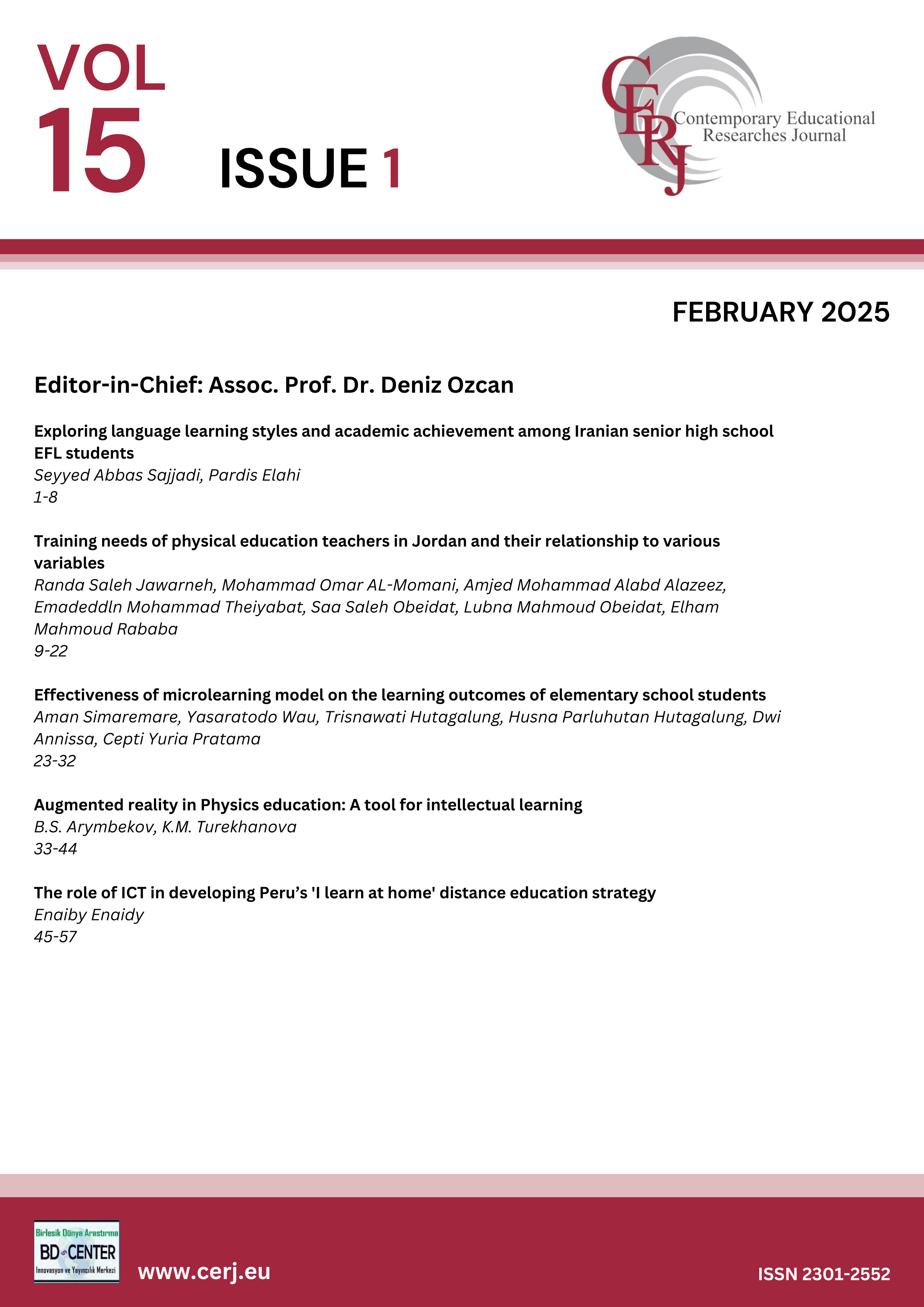Augmented reality in Physics education: A tool for intellectual learning
Main Article Content
Abstract
This study investigated the integration of augmented reality (AR) and virtual reality (VR) technologies in physics education, focusing on their potential to enhance teaching methods and address existing pedagogical challenges. A literature review, along with an experimental comparison of AR and VR-based instruction, was conducted to assess their impact on student engagement, comprehension, and retention. The findings indicated that AR significantly improved student participation and information retention, with students using AR-based resources demonstrating higher engagement and comprehension compared to those using traditional materials. The research also highlighted the need for teacher training in AR-based instruction and the value of student involvement in developing AR applications. By employing a combination of theoretical and practical teaching strategies, the study showed that AR could effectively support the visualization and problem-solving of complex physics concepts. Additionally, the study emphasized the broader applications of AR and VR technologies in fields such as medicine and engineering, suggesting the importance of continued research and investment to unlock their full educational potential while addressing accessibility challenges.
Keywords: Augmented reality; education; physics; virtual reality
Downloads
Article Details

This work is licensed under a Creative Commons Attribution-NonCommercial-NoDerivatives 4.0 International License.
Authors who publish with this journal agree to the following terms:
- Authors retain copyright and grant the journal right of first publication with the work simultaneously licensed under a Creative Commons Attribution License that allows others to share the work with an acknowledgement of the work's authorship and initial publication in this journal.
- Authors are able to enter into separate, additional contractual arrangements for the non-exclusive distribution of the journal's published version of the work (e.g., post it to an institutional repository or publish it in a book), with an acknowledgement of its initial publication in this journal.
- Authors are permitted and encouraged to post their work online (e.g., in institutional repositories or on their website) prior to and during the submission process, as it can lead to productive exchanges, as well as earlier and greater citation of published work (See The Effect of Open Access).
